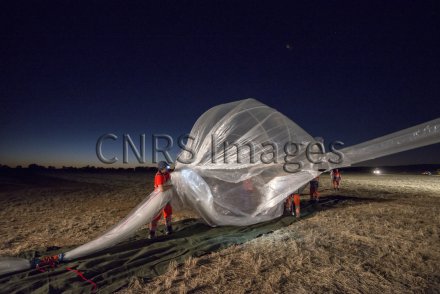Production year
2017

© Sébastien CHASTANET / CNES / OMP / IRAP / UT3 / CNRS Images
20170104_0101
Inflating the auxiliary balloon that will lift the CLIMAT gondola pending its flight at the Alice Springs balloon launch base in Australia. The load-carrying stratospheric balloon, 50 times larger than the auxiliary balloon, will take over and lift the gondola to an altitude of several tens of kilometres. Auxiliary balloons are used to raise delicate equipment off the ground, with the main balloon taking over afterwards. CLIMAT is a 240 kg gondola, carried under a 150,000 cu. m balloon to a ceiling altitude of 33 km. In April 2017, it flew for 5 1/2 hours including a two-hour slow descent phase. The CLIMAT flight (Combination of Lasers and Instruments for in situ Measurement of the Atmosphere of Earth) concerns a group of experiments by French and European laboratories aimed at furthering research into atmospheric physics and chemistry. For example, its 2015 flight enabled scientists to identify a 10% increase in methane in columns between 0 km and 15 km between 2000 and 2015; this important finding was subsequently reported at the COP21 climate conference.
The use of media visible on the CNRS Images Platform can be granted on request. Any reproduction or representation is forbidden without prior authorization from CNRS Images (except for resources under Creative Commons license).
No modification of an image may be made without the prior consent of CNRS Images.
No use of an image for advertising purposes or distribution to a third party may be made without the prior agreement of CNRS Images.
For more information, please consult our general conditions
2017
Our work is guided by the way scientists question the world around them and we translate their research into images to help people to understand the world better and to awaken their curiosity and wonderment.